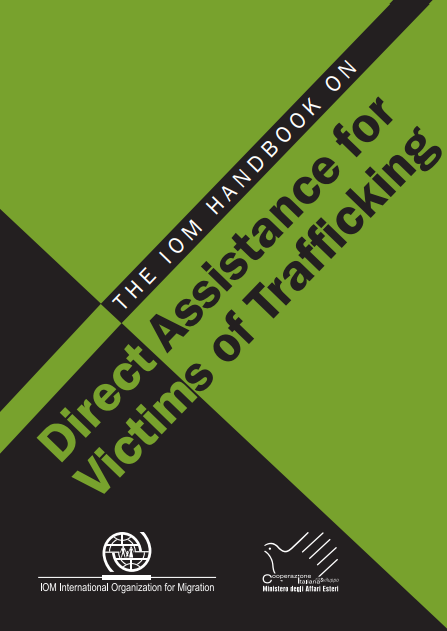This Handbook provides guidance and advice necessary to effectively deliver a full range of assistance to victims of trafficking from the point of initial contact and screening up to the effective social reintegration of the individuals concerned. Although the Handbook covers assistance to minors, it does not do so in the depth necessary for the concerned practitioner who should be sure to also refer to UNICEF’s Guidelines on the Protection of Child Victims of Trafficking.
Structure of the Handbook
The Handbook is designed to be read as a whole, but it can also be used to refer to specific topics dealt with in specific chapters. All the chapters and appendices are closely interrelated. To address such complex issues in the most professional manner possible, it is important to adopt a holistic approach. In order to gain maximum benefit from this Handbook, the reader is advised to read and develop a sound knowledge of the entire contents.
The Handbook is divided into seven sections described below. The chapters are set out in sequential order. It is recommended for the reader to proceed systematically and become well acquainted with the whole content of each successive chapter. However, where specific guidance is needed on a specific topic, each chapter can also be consulted on its own.
Chapter 1 Security and Personal Safety
Chapter 2 Screening of Victims of Trafficking
Chapter 3 Referral and Reintegration Assistance
Chapter 4 Shelter Guidelines
Chapter 5 Health and Trafficking
Chapter 6 Cooperation with Law Enforcement Authorities
Appendix I Ethical Principles in Caring for and Interviewing Trafficked Persons
Appendix II Interview Checklist
Appendix III Glossary

